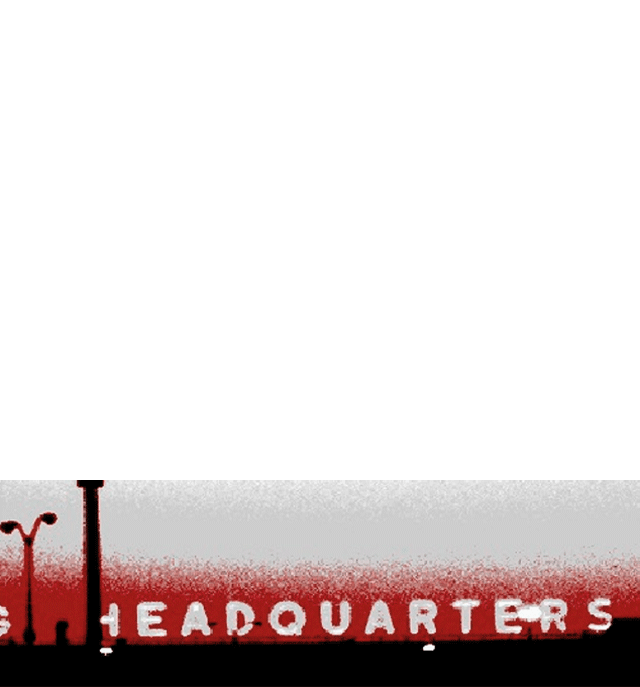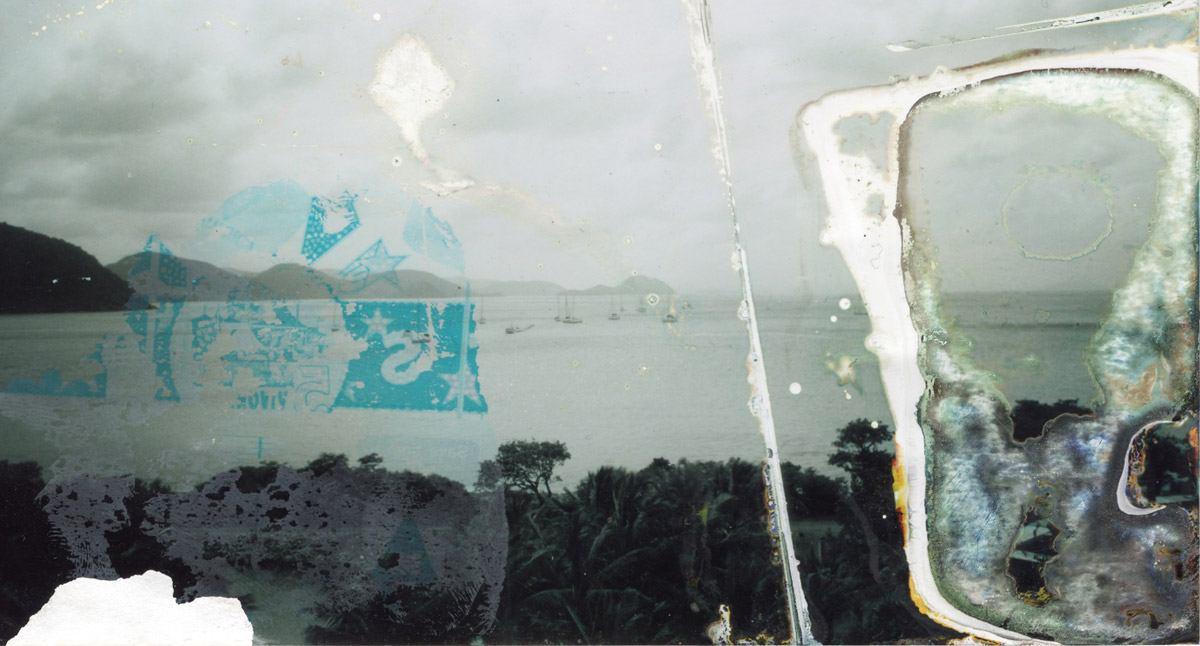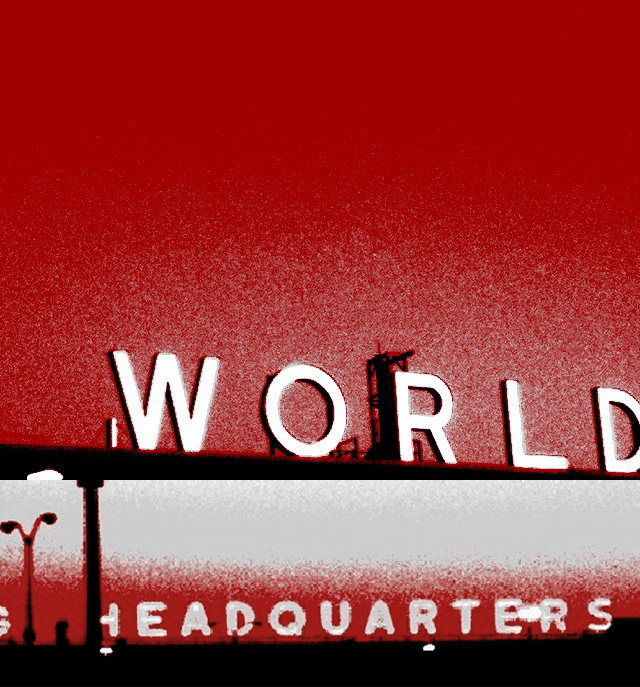intuition
archive: review-intuition: intuition , text: Gertrud Sandqvist
From The Book 2nd Sight-The Grafik Design of David Carson :
It has been repeated ad nauseam that post-industrial culture is predominantly visual. If that is the case, do the visual arts need to be separated off into some special category?
Yes. Contrary to the accepted view, the position of the visual arts in Western society has remained amazingly undisturbed. The fact that we are still able to appreciate a Renaissance painting shows how little the conditions for the visual arts have changed with society as a whole.
All these new media that allow the production of a continuous stream of images make it easier to distinguish the properties that give art its special status.
Jean Martin Charcot thought the delusions of his hysterical patients were caused by their allowing a stream of images to create a barrier between themselves and reality. They dreamed. They resisted a reality that they experienced as too threatening by replacing it with illusions or hallucinations; phantoms to which their bodies or minds could react. Charcot and his successors noticed that by talking to an afflict-ed individual, and by getting her to speak, they could help her to live without these images. According to them, and to Western philosophy from Descartes onwards, language organizes the self. This is the root of the widely held belief in the precedence of the word over the image .
When the Surrealists wanted to access to the unconscious springs of visual creativity, one object of their admiration was the hysteric, the lunatic, and her images. They worshipped kitsch, found objects, and all forms of photography; any visual sources that got away from the possibility of choice, and thereby from the ascription of value. In practice, this meant rejecting all visual art that could be considered important in the sense of making demands on the viewer.
Surrealism was long seen as a peripheral movement, and mostly interesting as a phenomenon that reflected its time. It has been remarked that the Surrealists’ defense of hysteria can be viewed as a reaction to an unendurable reality, to an insane period between two world wars. The hysteric is not free. She repeats images compulsively, as a defence. The Surrealists also lived through the break-through of mass visual culture. They lived in societies whose leaders understood the potential for manipulation offered by having pictures produced that shattered the self and its capacity for inde-pendent judgement; and they used this to make whole peoples hysterical. Interestingly enough, these leaders also loathed difficult visual art, perhaps primarily because it was useless for their purposes.
Interesting enough, these leaders also loathed difficult visual art, perhaps primarily because it was useless for their
But many of the Surrealists were important artists. This was because their practice looked different from their practice looked diffrent from their theo-ry. Their combination of hysteria with the mass-production of an appar-ently undifferentiated stream of images actually entails a profound understanding of what distinguishes visual art from other types of image, and from the images produced by the psyche. The Surrealists celebrated terror, meaninglessness, the dissolution of all cohesion, the disintegra-tion of the self. But they did so in pictures whose factual existence con-tradicts their own theses. And then they, too, were persecuted.
Might we not stay that visual art involves a resistance to, not an imitation of, the images produced by the psyche? And that this is why it can have a healing effect? That visual art is dependent on choices made from within the part of our experience that is inaccessible to language, and which thus represents an alternative way of building the bridge between self and would that is also a function of the world?
This has far-reaching consequences. For one thing, it means that only part of a work of art is open to analysis, while, on the other hand, the work can, of course, be described and can constiture starting point for an interpretation. Nonetheless, the work exists as both its own reality and as a more or less complex model for an assumption about reality.
Confusion of the human psyche’s inherent capacity to produce images with the capacity to make visual art can give rise to the misconception that everyone has a need for, or at least potentially has the capacity to make, visual art. It follows from this that there need be no connection between a visual culture that, for the sake of influence, imitates the way the psyche produces images, and visual art. Nor does there have to be any connection between a culture that depicts real-ity mechanically and visual art.
By resisting psy-chic images (which are sometimes called illusions) visual art can give as an understanding of the connections between the self and the world, one that is accurate in a different way from the accuracy of language. This implies that the various tools that have been constructed for thinking, such as philosophy or, more specifically, logic, are of no use here other than as parallels.
Another thing that distinguishes visual art from other art forms is that it demands a link between secing and doing, between perception and the hand as a part of the body, and the body as located in the actual, existing space. Now that perception, seeing, has been associated to such a degree with theories about the way consciousness and language function, visual art has once again been linked, by the back way, with language and its way of achieving insight. But let us go in the other direction: hand-seeing-conscious-ness.
It is characteristic of all kinds of handicraft that we learn to master them through someone showing us what to do and then imi-tating them. This applies to all skills that are not medi-ated through language, from riding a bicycle to cooking. Then, as we gradually gain in skill, we learn a set of rules that is applicable to that specific handicraft. This set of rules is a concentrate of experiences accumulated, the individual is able to gain the freedom to deviate from it in a particular direction.
Accumulated experience that is not immediately accessible to lan-guage, but which does affect our consciousness, is usu-ally called intuition. An intuitive choice is thus as con-scious as a considered choice, it simply uses aspects of consciousness that are not accessible to language. It cannot say, but it can show.
Whenever any form of knowledge that has been acquired through means other than language is to be assessed or applied to something eles, this is done, I think, by making intuitive choices. Another term for it could be “silent knowledge”, believe these intuitive choices are crucial to what the artist sees, and thus to the question/problem/possibility that he or she wants to adress in the artwork. It then becomes inappropriate to ask a variety of questions, because they cannot be explored in a relevant way with-in the context of the work. Without the hand’s familiar-ity with the material that has always played a crucial role in people’s ability to replace dream images with factual skills, these choices cannot be made.
It is here that visual art’s resistance to the dream image comes into play, in a mode of seeing that is founded on relevant choices arrived at through intuition. As choices are followed through, various distinctions are established, what we occasionally call aesthetics, and which consist of qualitative comparisons. Naturally enough, these distinctions are also primarily interpreted through experience, but not necessarily only experience that is acquired through the familiarity of the hand. We are in the domain of seeing, and more generally of the body’s ability to apprehend proportions, spatial relations, nuances, via the sences.
This seeing also structures consciousness, and, in that it exists side by side with language, the experience can be referred to linguistically, but it cannot be mediated through language.
And the artist contemplates her work; what it might mean, in which context it belongs, how it is to be executed, with what it can be compared. Artist and viewer, in a shared produc-tion of meaning.
Through her capacity to apply knowledge from the entire sphere of human experience, the artist is able to make real images, which by profoundly changing our conception of reality confirm the primary hallmark of reality, its changeability.
This generates a humility in the face of the image’s resistance. Since visual art is a form of reality, it is unpredictable. In contrast to the image that is made in order to imitate our illusions, visual art cannot be produced by mere speculation.
Is that why in many cultures visual art has been linked with magic?
Not because it deals with illusions, but because it is not open to external control? And because it is founded on non-linguistically mediated knowledge? Wizards and witches became powerful because they mediated the experience of the connection between factual and perceived reality that was, and is, vital.
And, there, we come back to intuition. When a visual artist claims that he or she does not think, this rarely implies some form of somenambu-lant state. It means that she uses experiences that are not accessible to language other than through a reconstraction of a course of events. Understood in this way, intuition becomes a composite term for an active, demanding way of experiencing and reworking reality.
Such a visual art does not permit the viewer to be lulled into inactivity by her own, familiar dreams.
It demands that the whole person be awake, so that she knows what she is seeing,
rather than that she sees what she knows.
From The Book 2nd Sight-The Grafik Design of David Carson :
It has been repeated ad nauseam that post-industrial culture is predominantly visual. If that is the case, do the visual arts need to be separated off into some special category?
Yes. Contrary to the accepted view, the position of the visual arts in Western society has remained amazingly undisturbed. The fact that we are still able to appreciate a Renaissance painting shows how little the conditions for the visual arts have changed with society as a whole.
All these new media that allow the production of a continuous stream of images make it easier to distinguish the properties that give art its special status.
Jean Martin Charcot thought the delusions of his hysterical patients were caused by their allowing a stream of images to create a barrier between themselves and reality. They dreamed. They resisted a reality that they experienced as too threatening by replacing it with illusions or hallucinations; phantoms to which their bodies or minds could react. Charcot and his successors noticed that by talking to an afflict-ed individual, and by getting her to speak, they could help her to live without these images. According to them, and to Western philosophy from Descartes onwards, language organizes the self. This is the root of the widely held belief in the precedence of the word over the image .
When the Surrealists wanted to access to the unconscious springs of visual creativity, one object of their admiration was the hysteric, the lunatic, and her images. They worshipped kitsch, found objects, and all forms of photography; any visual sources that got away from the possibility of choice, and thereby from the ascription of value. In practice, this meant rejecting all visual art that could be considered important in the sense of making demands on the viewer.
Surrealism was long seen as a peripheral movement, and mostly interesting as a phenomenon that reflected its time. It has been remarked that the Surrealists’ defense of hysteria can be viewed as a reaction to an unendurable reality, to an insane period between two world wars. The hysteric is not free. She repeats images compulsively, as a defence. The Surrealists also lived through the break-through of mass visual culture. They lived in societies whose leaders understood the potential for manipulation offered by having pictures produced that shattered the self and its capacity for inde-pendent judgement; and they used this to make whole peoples hysterical. Interestingly enough, these leaders also loathed difficult visual art, perhaps primarily because it was useless for their purposes.
Interesting enough, these leaders also loathed difficult visual art, perhaps primarily because it was useless for their
But many of the Surrealists were important artists. This was because their practice looked different from their practice looked diffrent from their theo-ry. Their combination of hysteria with the mass-production of an appar-ently undifferentiated stream of images actually entails a profound understanding of what distinguishes visual art from other types of image, and from the images produced by the psyche. The Surrealists celebrated terror, meaninglessness, the dissolution of all cohesion, the disintegra-tion of the self. But they did so in pictures whose factual existence con-tradicts their own theses. And then they, too, were persecuted.
Might we not stay that visual art involves a resistance to, not an imitation of, the images produced by the psyche? And that this is why it can have a healing effect? That visual art is dependent on choices made from within the part of our experience that is inaccessible to language, and which thus represents an alternative way of building the bridge between self and would that is also a function of the world?
This has far-reaching consequences. For one thing, it means that only part of a work of art is open to analysis, while, on the other hand, the work can, of course, be described and can constiture starting point for an interpretation. Nonetheless, the work exists as both its own reality and as a more or less complex model for an assumption about reality.
Confusion of the human psyche’s inherent capacity to produce images with the capacity to make visual art can give rise to the misconception that everyone has a need for, or at least potentially has the capacity to make, visual art. It follows from this that there need be no connection between a visual culture that, for the sake of influence, imitates the way the psyche produces images, and visual art. Nor does there have to be any connection between a culture that depicts real-ity mechanically and visual art.
By resisting psy-chic images (which are sometimes called illusions) visual art can give as an understanding of the connections between the self and the world, one that is accurate in a different way from the accuracy of language. This implies that the various tools that have been constructed for thinking, such as philosophy or, more specifically, logic, are of no use here other than as parallels.
Another thing that distinguishes visual art from other art forms is that it demands a link between secing and doing, between perception and the hand as a part of the body, and the body as located in the actual, existing space. Now that perception, seeing, has been associated to such a degree with theories about the way consciousness and language function, visual art has once again been linked, by the back way, with language and its way of achieving insight. But let us go in the other direction: hand-seeing-conscious-ness.
It is characteristic of all kinds of handicraft that we learn to master them through someone showing us what to do and then imi-tating them. This applies to all skills that are not medi-ated through language, from riding a bicycle to cooking. Then, as we gradually gain in skill, we learn a set of rules that is applicable to that specific handicraft. This set of rules is a concentrate of experiences accumulated, the individual is able to gain the freedom to deviate from it in a particular direction.
Accumulated experience that is not immediately accessible to lan-guage, but which does affect our consciousness, is usu-ally called intuition. An intuitive choice is thus as con-scious as a considered choice, it simply uses aspects of consciousness that are not accessible to language. It cannot say, but it can show.
Whenever any form of knowledge that has been acquired through means other than language is to be assessed or applied to something eles, this is done, I think, by making intuitive choices. Another term for it could be “silent knowledge”, believe these intuitive choices are crucial to what the artist sees, and thus to the question/problem/possibility that he or she wants to adress in the artwork. It then becomes inappropriate to ask a variety of questions, because they cannot be explored in a relevant way with-in the context of the work. Without the hand’s familiar-ity with the material that has always played a crucial role in people’s ability to replace dream images with factual skills, these choices cannot be made.
It is here that visual art’s resistance to the dream image comes into play, in a mode of seeing that is founded on relevant choices arrived at through intuition. As choices are followed through, various distinctions are established, what we occasionally call aesthetics, and which consist of qualitative comparisons. Naturally enough, these distinctions are also primarily interpreted through experience, but not necessarily only experience that is acquired through the familiarity of the hand. We are in the domain of seeing, and more generally of the body’s ability to apprehend proportions, spatial relations, nuances, via the sences.
This seeing also structures consciousness, and, in that it exists side by side with language, the experience can be referred to linguistically, but it cannot be mediated through language.
And the artist contemplates her work; what it might mean, in which context it belongs, how it is to be executed, with what it can be compared. Artist and viewer, in a shared produc-tion of meaning.
Through her capacity to apply knowledge from the entire sphere of human experience, the artist is able to make real images, which by profoundly changing our conception of reality confirm the primary hallmark of reality, its changeability.
This generates a humility in the face of the image’s resistance. Since visual art is a form of reality, it is unpredictable. In contrast to the image that is made in order to imitate our illusions, visual art cannot be produced by mere speculation.
Is that why in many cultures visual art has been linked with magic?
Not because it deals with illusions, but because it is not open to external control? And because it is founded on non-linguistically mediated knowledge? Wizards and witches became powerful because they mediated the experience of the connection between factual and perceived reality that was, and is, vital.
And, there, we come back to intuition. When a visual artist claims that he or she does not think, this rarely implies some form of somenambu-lant state. It means that she uses experiences that are not accessible to language other than through a reconstraction of a course of events. Understood in this way, intuition becomes a composite term for an active, demanding way of experiencing and reworking reality.
Such a visual art does not permit the viewer to be lulled into inactivity by her own, familiar dreams.
It demands that the whole person be awake, so that she knows what she is seeing,
rather than that she sees what she knows.








